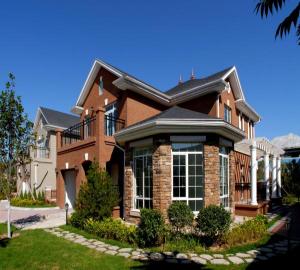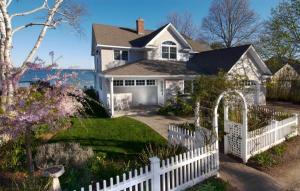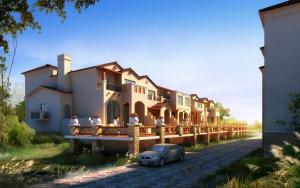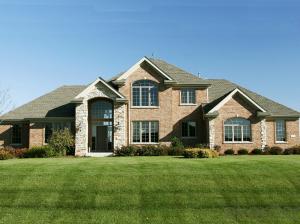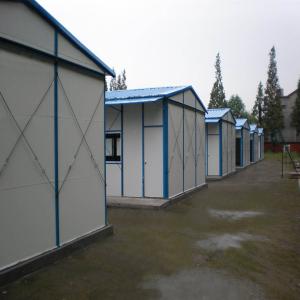Residential Building
- Loading Port:
- China Main Port
- Payment Terms:
- TT or L/C
- Min Order Qty:
- 80 Sqm m²
- Supply Capability:
- 20,0000 Sqm/ Month m²/month
OKorder Service Pledge
OKorder Financial Service
You Might Also Like
General Information of Residential Building
Origin Place Beijing China Brand Name IDEAL HOME Model Number I-V006 Material Steel & Insulation panel Structure Light steel Shape Slope or flat roof Size Customize Layout design Technical support Installation Professional guide Use life 75 years Volume 200sqm/40HQ Seismic resistant Grade 8 Color Customize window and door Customize Wind resistance Grade 12
General Information of Residential Building
Websteel Building System
WEBSTEEL building system originates from Canada and has been applied in many countries in North America for more than 20 years. Currently, it is the only technology, which can adopt 100% cold-formed thin-walled steel to construct buildings with up to 6 stories, and can be adopted for every climate conditions.
The main body of building members for the websteel system is a miniature bridge frame which is composed of light, thin wall square tube (rectangular tube) undergoing galvanization cold-formed high-frequency welding and triangular V-shaped connector. This bridge frame may be adopted for building beam, wall, floor, as well as roof. In a word, miniature bridge frame adopting this rectangular tube structure may be used in all kinds of building elements.
Together with the increasing of the usage of light steel frame construction around the world in the recent years, the structural and decoration boards industry has made significant steps for improvement. New materials with high quality specification are available now in the market. Combining these materials together with the web steel frame system, we are in position to propose to our customers building solutions that create a new understanding of living culture with environmental competence and harmony.
Application of Residential Building
1) Light steel residential and office buildings up to 6 storeys
2) Infill partitions – the excellent fire resistance, structural strength and sound and heat insulation characteristics of the websteel wall system offers a fast, low cost, flexible for future modifications and high safety partitions system in both heavy steel and reinforced concrete frame buildings in low and high rise buildings.
Technical Data of Residential Building
1) Firm intensity, anti-wind and anti-earthquake
Main body miniature bridge frame of WEBSTEEL building system is composed of tube with the square, rectangular cross section and V-shaped connector. As it is well known, it is not easy for hollow structure steel to undergo distortion and in combination with the connection method of triangular bridge frame, which results in even force transmission and distribution and integrated load transmission system.
2) Energy-saving, sound insulation
Wall and floor plate of WEBSTEEL building are composed of independent bridge frame with two tube fittings, 2 rectangular tubes are discontinuously connected by V-shaped connector of less than 2 mm, and heat transfer route is minimal with thermal bridge completely separated, hence it is almost impossible for internal and external heat transfer, which makes two independent heat-cycle systems without interference for inside and outside of the building.
3) Safeguard for fire prevention
There are three reasons for WEBSTEEL building’s high fire resistance:
the first one is its structure - even if local fire occurs, WEBSTEEL spatial grid structure may obtain support through nearby bridge frames;
4) Being beneficial for environment protection
Field construction with websteel rarely generates wastes or noise. Once the house reconstruction is needed in the future, the disassembled members can be reused with the recovery rate of up to 90%, which completely abides by the Evaluation System for Green Ecological Building prescribed by developed countries, such as 2nd edition of “Evaluation System for Green Building” issued by U.S. Green Building Council and related regulations of “Technical Essentials for Construction of State Comfortable Housing Estate Pilot Project” and the European Sustainability Guide.
Pics of Residential Building
Wall System of Residential Building
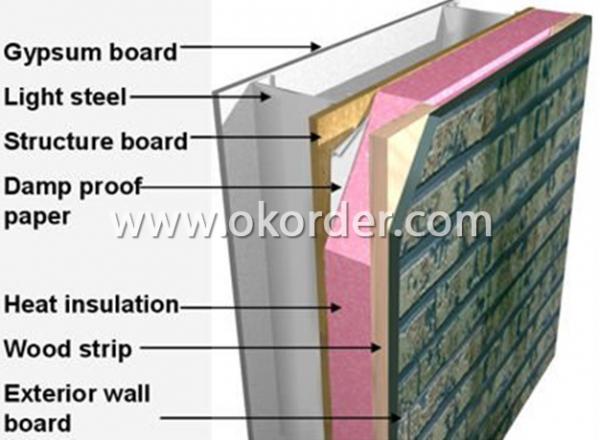
Inner pics & Packing pics of Residential Building
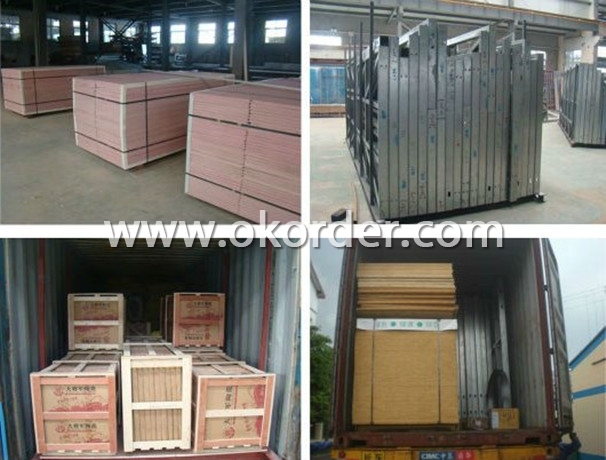
- Q:Are container houses suitable for agricultural or farming purposes?
- For agricultural or farming purposes, container houses are indeed a suitable option. These structures possess various advantages that make them attractive for such applications. Primarily, container houses are highly customizable and easily modified to meet specific farming requirements. They can serve as storage facilities, livestock shelters, or hydroponic growing spaces with ease. Moreover, container houses exhibit durability and weather resistance, which is crucial for enduring the diverse elements associated with farming. They are engineered to withstand extreme weather conditions, rendering them appropriate for use in rural areas where agricultural activities are frequently conducted. Furthermore, in contrast to traditional building methods, container houses are cost-effective. Construction and maintenance expenses are significantly lower, allowing farmers to allocate their resources more efficiently. This affordability establishes container houses as a practical choice for small-scale farmers or individuals with limited budgets. Another benefit of container houses is their mobility. They can effortlessly be transported to different locations, enabling farmers to adapt to changing farming needs or relocate to more suitable areas. This flexibility proves particularly advantageous for farmers engaged in seasonal or rotational farming practices. Additionally, container houses promote eco-friendliness as they repurpose old shipping containers, reducing waste and fostering sustainability. They can also be equipped with energy-efficient features, such as solar panels or rainwater harvesting systems, further lessening their environmental impact. However, it is important to acknowledge that using container houses for agricultural purposes may have limitations. The size of the containers might restrict the scale of farming operations, and additional insulation or ventilation may be necessary to maintain suitable conditions for specific crops or livestock. In conclusion, container houses can serve as a suitable choice for agricultural or farming purposes. Their customizable nature, durability, affordability, mobility, and eco-friendliness establish them as a practical option for farmers seeking cost-effective and flexible structures to support their farming activities.
- Q:Are container houses suitable for artist studios or workshops?
- Yes, container houses can be suitable for artist studios or workshops. They provide a cost-effective and versatile solution for creative spaces, offering ample room for artistic activities. Container houses can be easily customized and modified to accommodate specific needs, such as adding large windows for natural lighting or creating separate sections for different art forms. Additionally, their portability allows artists to easily move their studios or workshops to different locations if desired.
- Q:Are container houses suitable for Airbnb or vacation rental investments?
- Airbnb or vacation rental investments can greatly benefit from the use of container houses. These innovative structures provide a distinct and trendy lodging experience that appeals to a wide range of guests. The modern and sleek designs of container houses have gained popularity among travelers seeking a unique stay. There are several advantages to investing in container houses for Airbnb or vacation rentals. Firstly, they offer cost-effectiveness as containers can be purchased at a lower price compared to traditional homes. This allows investors to save on initial investment costs and potentially earn higher returns on their investment. Secondly, container houses provide a high level of customization. They can be modified and designed according to the preferences and needs of the target market. This flexibility allows owners to create stylish and one-of-a-kind living spaces, which can be a significant selling point for potential guests. Moreover, container houses are environmentally friendly as they repurpose unused shipping containers and reduce waste. This aspect can be particularly appealing to environmentally conscious travelers who prioritize sustainable accommodation options. In terms of practicality, container houses require relatively less maintenance compared to traditional homes. They are made of durable materials that are resistant to various weather conditions, saving owners both time and money on upkeep and repairs. However, it is important to consider that container houses may not be suitable for all locations or markets. Some areas may have strict regulations or zoning restrictions that limit the potential of container houses as vacation rentals. Prior research and understanding of local regulations is crucial before investing in container houses for Airbnb or vacation rental purposes. In conclusion, container houses are a viable investment option for Airbnb or vacation rentals. Their unique design, cost-effectiveness, customizability, eco-friendliness, and low maintenance requirements make them an attractive choice for both owners and guests. However, it is essential to carefully consider local regulations and market demand before making any investment decisions.
- Q:What is the price of the villa decoration?
- Villa decoration design costs are generally in accordance with the 60-100 yuan / square meter standard charge
- Q:Are container houses suitable for educational facilities?
- Container houses can indeed be suitable for educational facilities. Container houses, or shipping container structures, have gained popularity in recent years due to their affordability, durability, and sustainability. These features make them an attractive option for educational facilities, especially in areas where traditional construction methods may be costly or limited. Container houses can be easily modified and customized to meet the specific needs of educational institutions. They can be transformed into classrooms, libraries, laboratories, or even administrative offices. The modular nature of these structures allows for easy expansion or reconfiguration, accommodating a growing student population or changing educational requirements. Moreover, container houses are portable and can be relocated if necessary. This flexibility can be particularly advantageous for educational facilities that require temporary structures or need to adapt to changing circumstances, such as disaster-stricken areas or areas with fluctuating student populations. Additionally, container houses are environmentally friendly. Repurposing shipping containers helps reduce waste and contributes to sustainable building practices. They can also be equipped with energy-efficient features, such as solar panels and rainwater harvesting systems, further reducing their environmental impact. However, it is important to consider certain factors before implementing container houses as educational facilities. Adequate insulation, ventilation, and climate control should be ensured to create a comfortable and conducive learning environment. Accessibility and compliance with safety regulations should also be taken into account to meet the needs of students with disabilities. In conclusion, container houses can be a viable option for educational facilities due to their affordability, flexibility, and sustainability. However, careful planning, design, and consideration of specific educational requirements are necessary to ensure a successful implementation.
- Q:Are container houses suitable for guest or in-law accommodations?
- Yes, container houses can be suitable for guest or in-law accommodations. Container houses have become increasingly popular due to their affordability, durability, and versatility. They can be easily customized and modified to create comfortable and functional living spaces for guests or in-laws. One of the main advantages of container houses is their portability. They can be transported and installed in various locations, making them ideal for accommodating guests or in-laws on your property. Additionally, container houses can be easily expanded or connected to create larger living spaces if needed. Container houses can also provide a unique and modern aesthetic, which can be appealing for guests or in-laws looking for a distinctive living experience. With proper insulation, ventilation, and interior design, container houses can offer a comfortable and inviting environment for guests or in-laws to stay in. Furthermore, container houses are typically more cost-effective compared to traditional construction methods. They require less time and labor to build, resulting in lower overall costs. This can be advantageous when considering guest or in-law accommodations, as it allows for a more budget-friendly option. However, it is important to consider certain factors before choosing container houses for guest or in-law accommodations. These include local building regulations, zoning restrictions, and the need for proper amenities such as plumbing and electricity. Additionally, privacy and noise control should be taken into account when designing the layout of the container house. Overall, container houses can be a suitable and practical option for guest or in-law accommodations. With proper planning, customization, and attention to details, container houses can provide a comfortable and attractive living space for guests or in-laws while offering the benefits of affordability and versatility.
- Q:Can container houses be built with a rooftop deck or rooftop garden?
- Rooftop decks or gardens can indeed be constructed on container houses. The main advantage of using shipping containers as building materials is their structural integrity, which allows them to support additional weight on top. By carefully planning and reinforcing the containers, valuable outdoor living space can be added. There are certain considerations to keep in mind when creating a rooftop deck or garden on a container house. Firstly, the structural integrity of the container must be evaluated, and necessary modifications should be made to ensure it can handle the extra weight. This may involve adding support beams or reinforcing the container's framework. Waterproofing is also essential to prevent leaks and water damage. A weather-resistant roofing system should be installed to protect the container and any interior spaces underneath. Additionally, insulation and drainage systems must be implemented to ensure the rooftop deck or garden remains functional in different weather conditions. Once the structural and waterproofing aspects are taken care of, the design and aesthetics of the rooftop deck or garden can be considered. Depending on the size of the container house and the available rooftop space, various features such as seating areas, planters, pergolas, or even small greenhouses can be incorporated. Using lightweight materials and selecting suitable plants can help maintain a welcoming and enjoyable rooftop area while minimizing overall weight. To sum up, container houses can be built with rooftop decks or gardens. With careful planning, modifications, and appropriate materials, these homes can offer a sustainable and innovative solution that combines practical living spaces with outdoor areas for relaxation and enjoyment.
- Q:Can container houses be designed with multiple bedrooms?
- Container houses have the potential to feature multiple bedrooms. These houses offer high levels of customization, allowing for the accommodation of various floor plans and layouts. By carefully planning and incorporating creative design elements, it is possible to include multiple bedrooms in a container house. To achieve this, additional container units can be stacked or joined together, creating more living spaces and separate bedrooms. The layout can be adjusted to include multiple bedrooms, bathrooms, and other necessary amenities. The number and size of containers needed will depend on the desired number of bedrooms and the overall size of the house. With the appropriate architectural design and engineering, container houses can be transformed into comfortable and functional homes that boast multiple bedrooms.
- Q:Are container houses suitable for areas with strict HOA regulations?
- Areas with strict HOA regulations may find container houses to be a viable choice, depending on the specific requirements and restrictions imposed by the HOA. While container houses may not align with the traditional aesthetic of many HOA-regulated neighborhoods, they offer several advantages that make them a feasible option. To begin, container houses are often more cost-effective compared to traditional stick-built homes. This affordability factor can be beneficial for individuals seeking to construct a home in areas with high property prices or limited housing options. Consequently, container houses can be an attractive choice for certain homeowners. Moreover, container houses are renowned for their durability and sustainability. These structures are designed to withstand tough transportation conditions, making them resistant to severe weather and natural disasters. Additionally, repurposing shipping containers helps reduce waste and fosters an environmentally friendly approach to construction. Nevertheless, it is crucial to note that container houses may require modifications to comply with the HOA's specific regulations. Such modifications may involve altering the house's exterior appearance, landscaping, or overall layout. Homeowners should thoroughly review and comprehend the HOA guidelines to ensure adherence. Furthermore, it is advisable to engage in open communication with the HOA board and seek their approval before embarking on a container house project. Demonstrating the benefits, addressing concerns, and providing detailed plans can help persuade the HOA to consider permitting container houses within their regulations. In conclusion, container houses can be suitable for areas with strict HOA regulations, but it necessitates thoughtful consideration, adherence to guidelines, and open communication with the HOA. The affordability, durability, and sustainability aspects of container houses can be appealing to homeowners, but it is essential to ensure compliance with the HOA's specific regulations.
- Q:Are container houses suitable for artists or creative professionals?
- Artists or creative professionals can definitely find container houses suitable. The versatility and adaptability of container houses are among their biggest advantages, which can be particularly appealing to those in the creative field. Artists can customize and design these houses to meet their specific artistic needs, creating their own unique and inspiring living spaces. Container houses provide a wide range of design possibilities. The modular nature of containers allows for easy expansion and modification, giving artists the freedom to create a space that suits their artistic requirements. They can transform these houses into spacious studios with ample natural light, providing an ideal environment for painters, sculptors, or any other type of artist. Furthermore, container houses can also have specific storage solutions for art supplies, materials, or even gallery spaces to showcase their work. Additionally, container houses are often more affordable than traditional houses or studios, making them an attractive option for artists or creative professionals on a tight budget. These houses can be built relatively quickly and at a fraction of the cost of a conventional home, allowing artists to invest more in their creative endeavors. Furthermore, container houses are environmentally friendly. By repurposing old shipping containers, they reduce waste and become an eco-conscious choice for artists concerned about sustainability. The use of recycled materials can also add a unique aesthetic appeal to the living space, further enhancing the artistic atmosphere. However, it is important to note that container houses may not be suitable for every artist or creative professional. Some artists may require larger or more specific spaces that cannot be easily accommodated by container houses. Additionally, those who value traditional architectural features or historical buildings may not find container houses aesthetically appealing. In conclusion, container houses can be a great option for artists or creative professionals seeking a unique, customizable, and cost-effective living space. These houses offer endless possibilities for artistic expression and can be tailored to meet the specific needs of each individual artist.
1. Manufacturer Overview |
|
|---|---|
| Location | Beijing, China |
| Year Established | 2000 |
| Annual Output Value | Above US$ 40 Million |
| Main Markets | Mid East; Eastern Europe; North America |
| Company Certifications | ISO 9001:2008 |
2. Manufacturer Certificates |
|
|---|---|
| a) Certification Name | |
| Range | |
| Reference | |
| Validity Period | |
3. Manufacturer Capability |
|
|---|---|
| a)Trade Capacity | |
| Nearest Port | Tianjin |
| Export Percentage | 51% - 60% |
| No.of Employees in Trade Department | 50-60People |
| Language Spoken: | English; Chinese |
| b)Factory Information | |
| Factory Size: | 10,000 square meters |
| No. of Production Lines | Above 3 |
| Contract Manufacturing | OEM Service Offered; Design Service Offered |
| Product Price Range | Average |
Send your message to us
Residential Building
- Loading Port:
- China Main Port
- Payment Terms:
- TT or L/C
- Min Order Qty:
- 80 Sqm m²
- Supply Capability:
- 20,0000 Sqm/ Month m²/month
OKorder Service Pledge
OKorder Financial Service
Similar products
New products
Hot products
Related keywords
